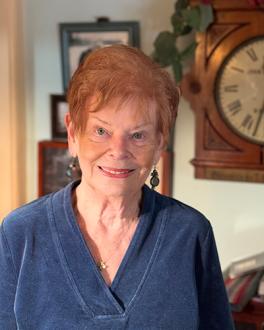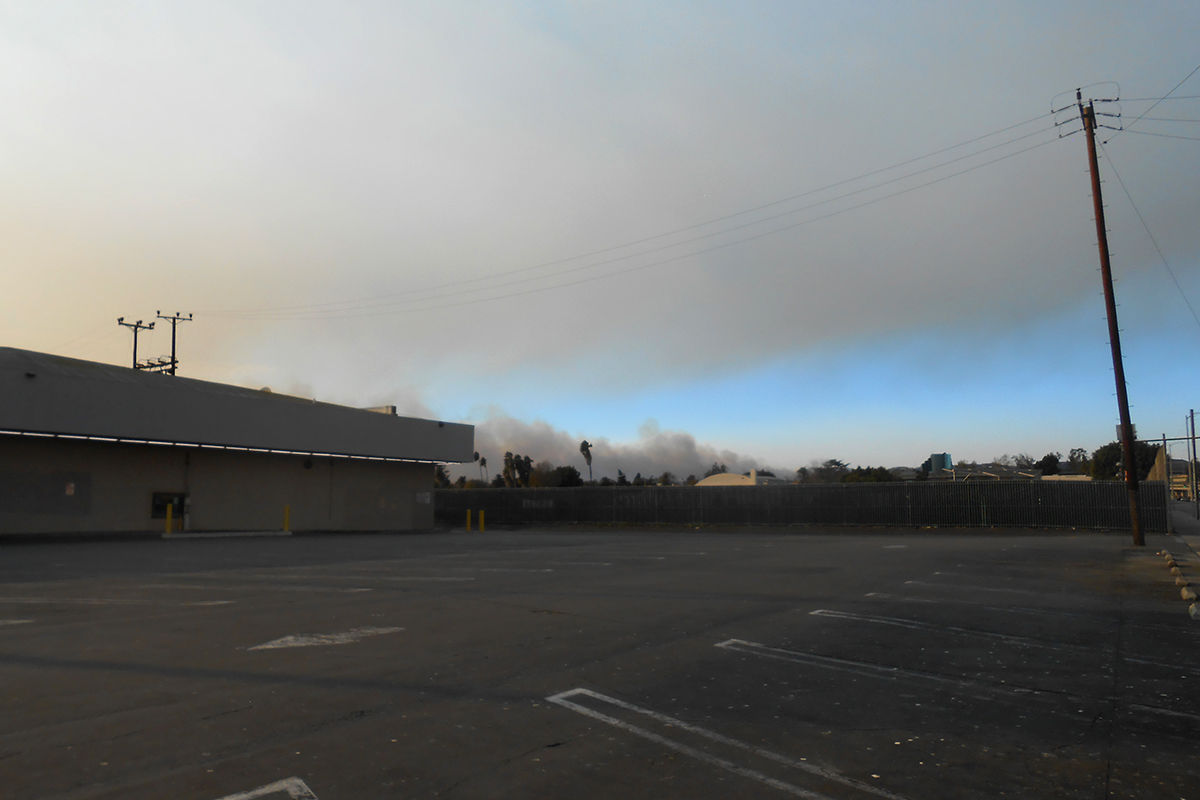'It isn't over. It's just starting.': Alumna reflects on devastating California wildfires

Jean Carfagno remembers the morning the sun disappeared.
Shortly after wildfires began devouring large swaths of Southern California on Jan. 7, 2025, she watched thick smoke obscure the daylight outside her home, located in the hills near Pacific Palisades. She turned on her porchlights and prepared to evacuate with her two cats, Marc Anthony and Cleopatra.
“It was pitch black here for 12 or 13 hours,” said Carfagno ’61, an alumna of The Ohio State University Department of Psychology and a member of its alumni advancement committee. “It was like midnight in the middle of the day.”
The encroaching flames ultimately spared her Westside Village neighborhood. But starting less than four miles away, the Palisades Fire, Eaton Fire and other blazes devastated Los Angeles County in one of the worst natural disasters in recent U.S. history.
When asked how the fires affected her, Carfagno initially hesitated. Unlike thousands of others, she didn’t lose her home. But she has seen the profound devastation around her city, and as a clinical psychologist, she’s intimately familiar with the psychic wounds and needs that a catastrophe of this scale inflicts.
“It was bad. Bad,” she said, her voice a mixture of gravity, disbelief and sadness.
‘A conglomeration of everything that went wrong’
The clinical coordinator of the Thelma McMillen Recovery Center, a Los Angeles-area treatment facility, Carfagno has lived in California for most of her adult life. She first moved there after graduating from Ohio State in the 1960s, later going on to earn a master’s degree in counseling psychology from Lindenwood University and a certification in alcohol and drug counseling from UCLA. In 1991, she co-founded the recovery center, part of the Torrance Memorial Medical Center, where she continues to treat clients.

As it does for most Californians, the threat of fire has long lurked in the back of Carfagno’s mind. With the Golden State’s clear, blue skies and ample sunshine comes this deadly possibility: A single discarded cigarette butt or downed power line is enough to destroy thousands of acres. The notorious Santa Ana winds can fan the flames and carry embers for miles.
In January, a combination of factors made the Los Angeles area especially vulnerable.
“Winds came before the rain. There wasn’t enough water. The reservoir was empty. Firemen had gone home,” Carfagno recalled. The fires were “just a conglomeration of everything that went wrong.”
By the time the flames were finally contained on Jan. 31, they had killed 29 people, partially or completely destroyed more than 18,000 structures and caused an estimated $250 billion in damage. In addition to multimillion-dollar mansions along the coastline, fires tore through apartment complexes and middle-class homes, through museums, surf shops, restaurants and motels.

Carfagno also thinks about damage done to some of the area’s landscapes—to the Los Angeles coastal waters, contaminated by fire debris, that have become a toxic stew of heavy metals; to Malibu and the Pacific Coast Highway, portions of which are still closed to the public.
And then there are the less quantifiable losses: the heirlooms and memories incinerated, the lives, livelihoods and communities upended. Carfagno emphasized the deep damage the fires have done to the historic area of Altadena, where Black homeowners, once barred from most California property ownership by redlining laws, had been able to establish a unique foothold.
About a mile away from the ocean, part of the high school her grandson attended also burned to the ground. Nearly all his classmates lost their homes.
“They’re going to reopen it, but reopen it to whom?” she wondered aloud. “The students are all living in hotels and motels all over the city.”
A mental health crisis in the making
In her more than 30 years of practice, Carfagno has counseled people who are dependent on everything from alcohol to opioids—but the one thing many of her clients have in common, what often precedes their addiction, is trauma: childhood abuse, sexual assault, war.
All around Los Angeles now, there are similar echoes of tragedy.
At first, attending to day-to-day needs offers people a way to cope with devastation, Carfagno said. Those displaced by the fires must find shelter, file insurance claims and get their mail. But eventually, the grief will sink in. Anger will mount.
“I think a lot of therapists are going to be working hard maybe six months from now,” she said. “People think, ‘Oh, it’s all over.’ It isn’t over. It’s just starting.”
To help address these mental health needs, Carfagno said she planned to offer free counseling through her church, where she hopes to guide people in conversation and help them process complicated emotions. She anticipates that some Los Angeles residents may struggle with substance use as they navigate their losses and pain.
She is not alone. Research is clear about the deep psychological toll of natural disasters: Survivors risk developing anxiety, depression and post-traumatic stress disorder, among other conditions. Some have even likened the California wildfires to the catastrophic Hurricane Katrina, which left a slew of mental health issues in its wake. In apparent preparation, organizations like the American Red Cross have set up distress hotlines, and the Los Angeles County Psychological Association published a list of nearly 600 licensed providers offering pro-bono services.
For Carfagno, the growing sense of community in Los Angeles—not something the city is always known for—is evident.

It's even visible at her local post office, which has been organizing and distributing mail for displaced residents. As people line up outside to receive their rerouted letters and packages, Carfagno often finds herself engaging with them and doing informal counseling — “parking lot therapy,” she calls it. As they talk, they're standing within walking distance from where fire menaced her own home this winter.
Like others united by tragic circumstance, what wildfire survivors need is people who can relate to them and hold space for their experience, she said.
“You need community with you—people who will listen and not tell you, ‘You’re going to be okay,’” Carfagno emphasized. “Don’t tell me I’m okay. Let me tell my story.”

